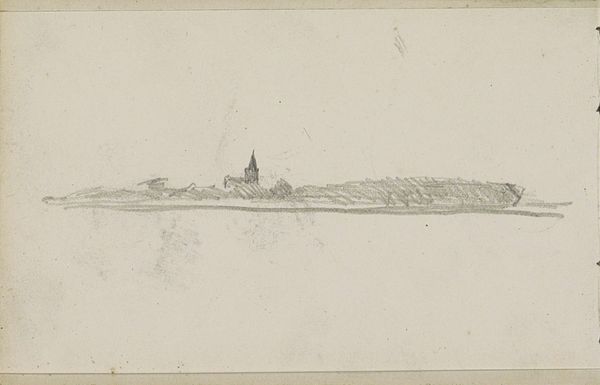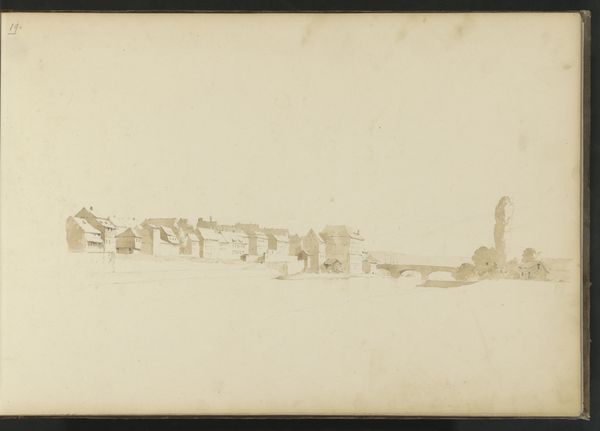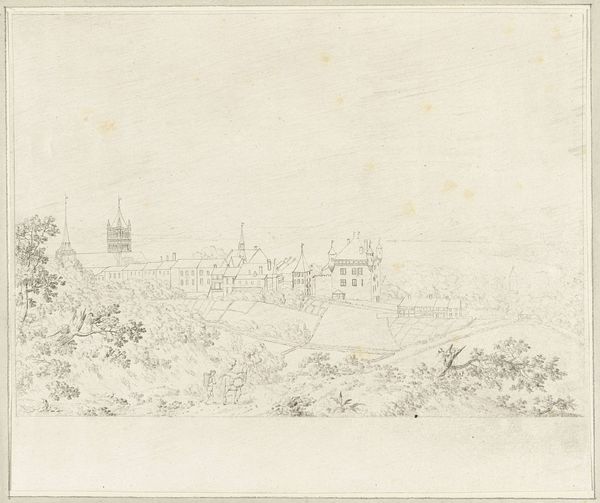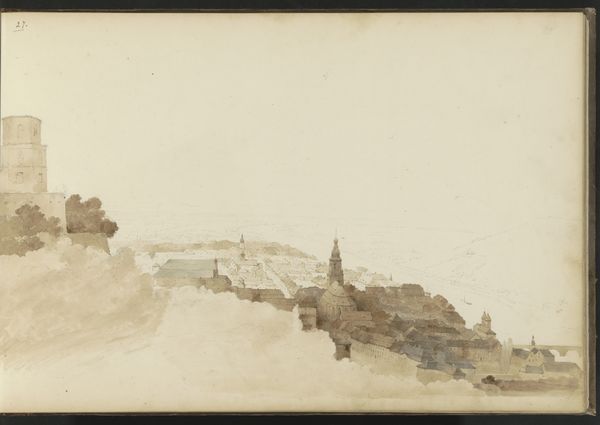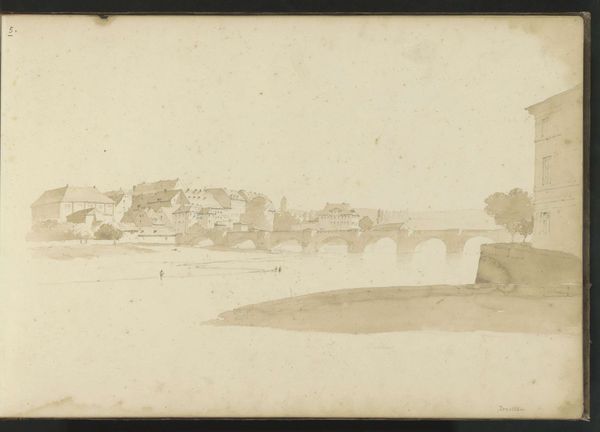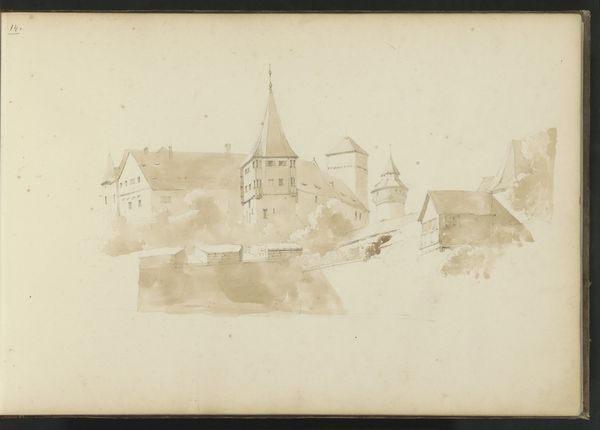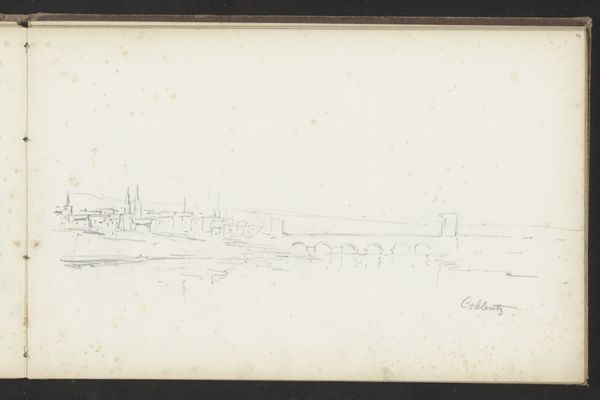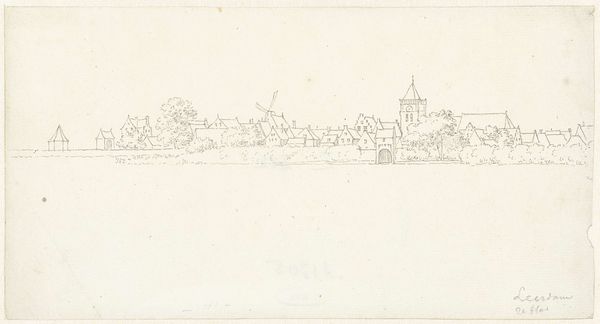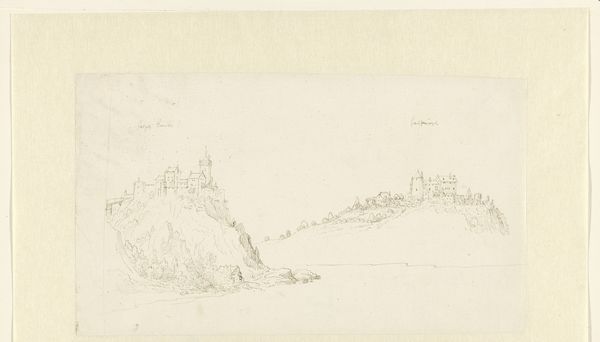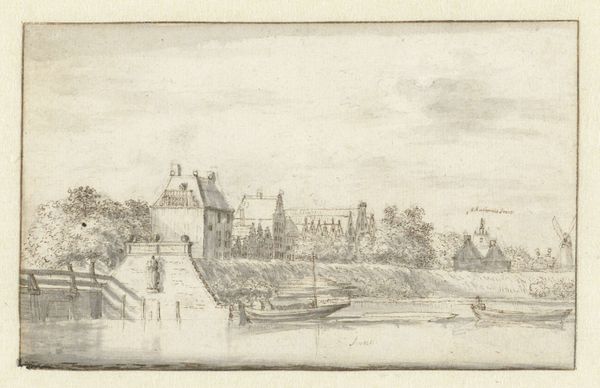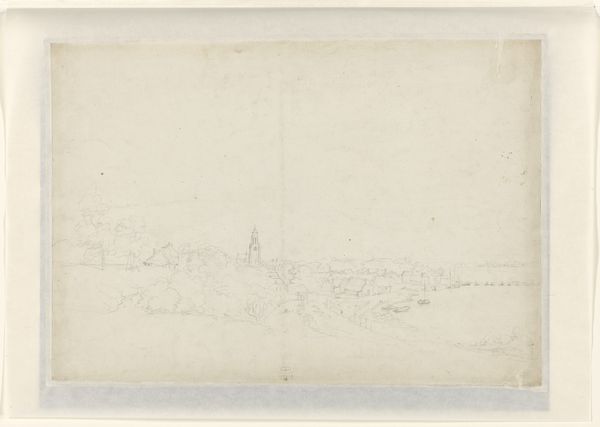
Copyright: Rijks Museum: Open Domain
Curator: Here we have "View of Passau on the Danube", a watercolor and ink drawing created by Kasparus Karsen between 1820 and 1896. It's currently held at the Rijksmuseum. Editor: The delicacy is striking. A muted palette; mostly monochrome washes giving an air of quiet contemplation to the scene. It makes me wonder what kind of person would feel the need to put so much negative space in their art piece. Curator: Given the date, plein-air sketches like these were crucial to landscape painting in studios, for generating topography. I am sure that Karsen observed carefully the construction and architectural methods of his time. I mean look at the precise lines used in creating the city. It shows how meticulously Karsen worked, using what was probably considered a fairly common medium at the time for landscape. Editor: But landscapes in Romanticism aren't *just* about geography! I see it as Karsen trying to grapple with social upheaval in the urbanizing landscape through art, a kind of silent dialogue reflecting anxieties of modernity. We shouldn't ignore what the Romantic gaze does in framing nature vs city. Curator: I agree that such contrast is significant, especially for a cityscape—but perhaps Karsen was just making records to reproduce accurately. Let's consider the paper; perhaps that was selected due to local production capacity, supporting local craftsmanship in spite of changing economies. Editor: And in doing so he unwittingly created not *just* art, but also socio-political records of urban expansion. Think about what gets visually prioritized and what that means. Also I feel that landscape functions symbolically by linking to ideas about collective identity or social harmony during those restless times. The bridge there serves more than mere infrastructure... Curator: Indeed. In the art market too the rising popularity of cityscapes as subjects would surely dictate artist priorities…a demand for specific kinds of representation to reinforce societal power dynamics by those patrons with monetary prowess influencing how the art materials are used. Editor: Interesting perspective; so much depends on production—yet it leaves me contemplating how art preserves narratives and sparks essential conversations within historical contexts of political and cultural upheaval. Thank you for highlighting all this information and art to talk about. Curator: And you for offering the perspectives it allows. Thank you.
Comments
No comments
Be the first to comment and join the conversation on the ultimate creative platform.

